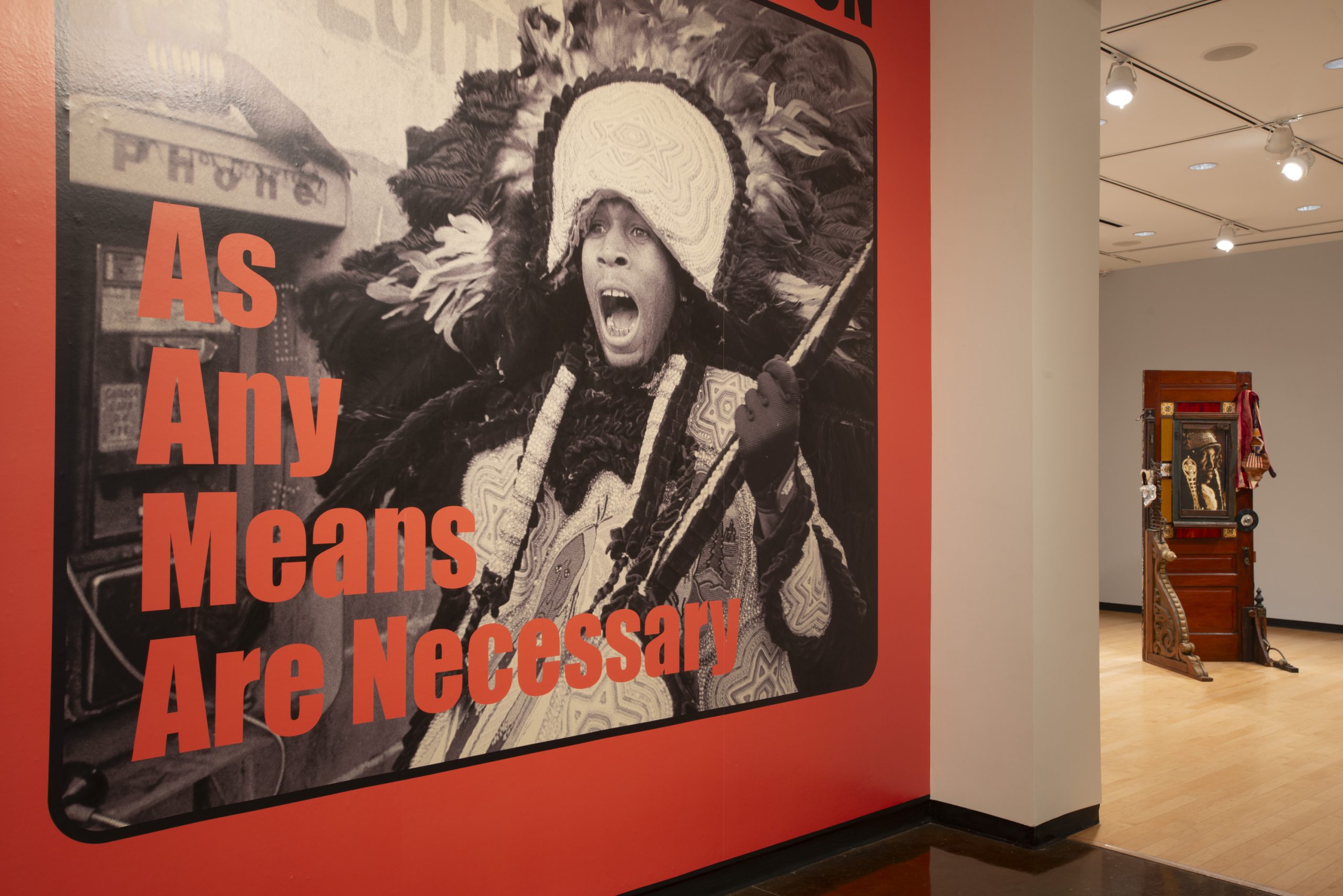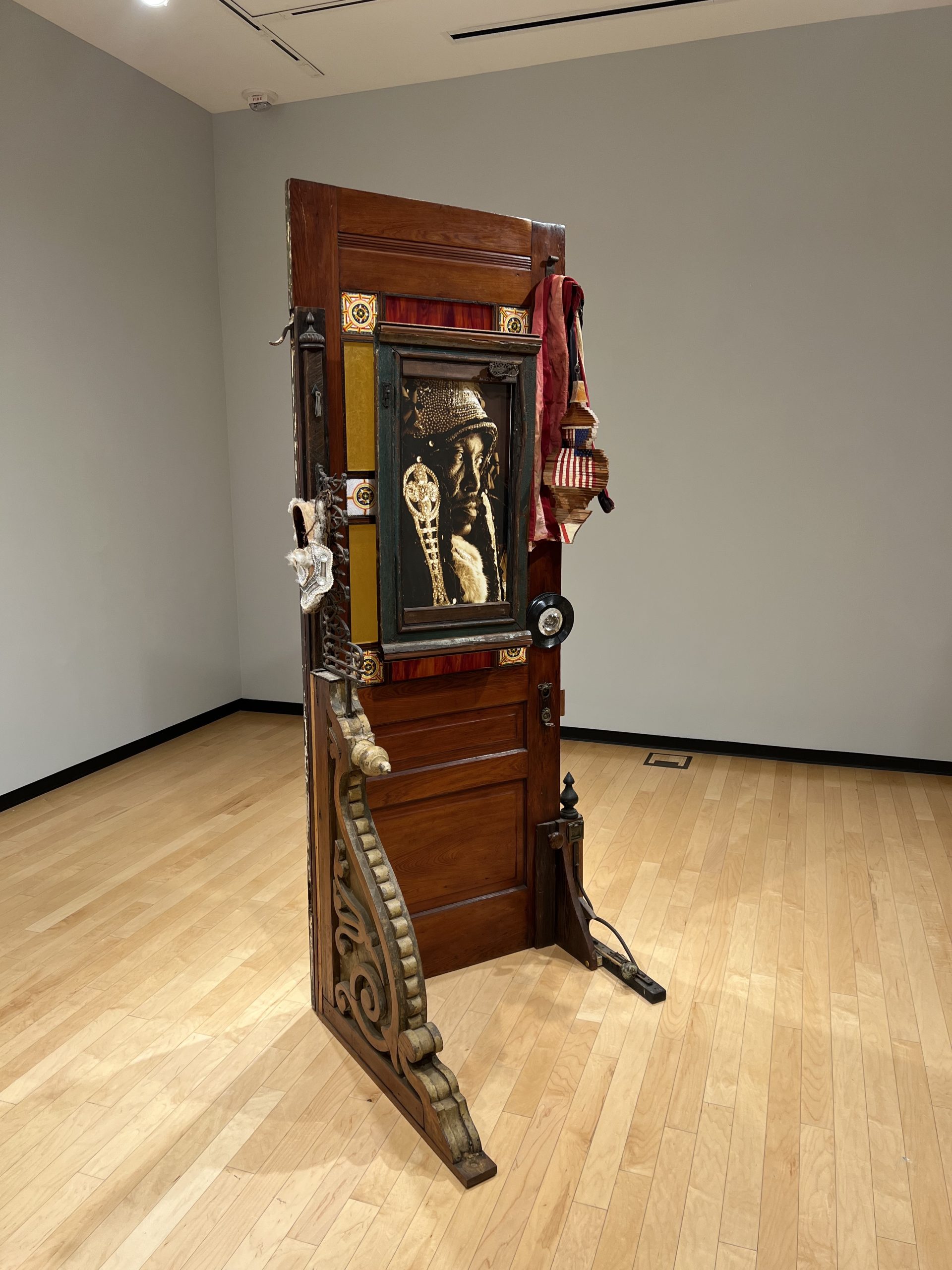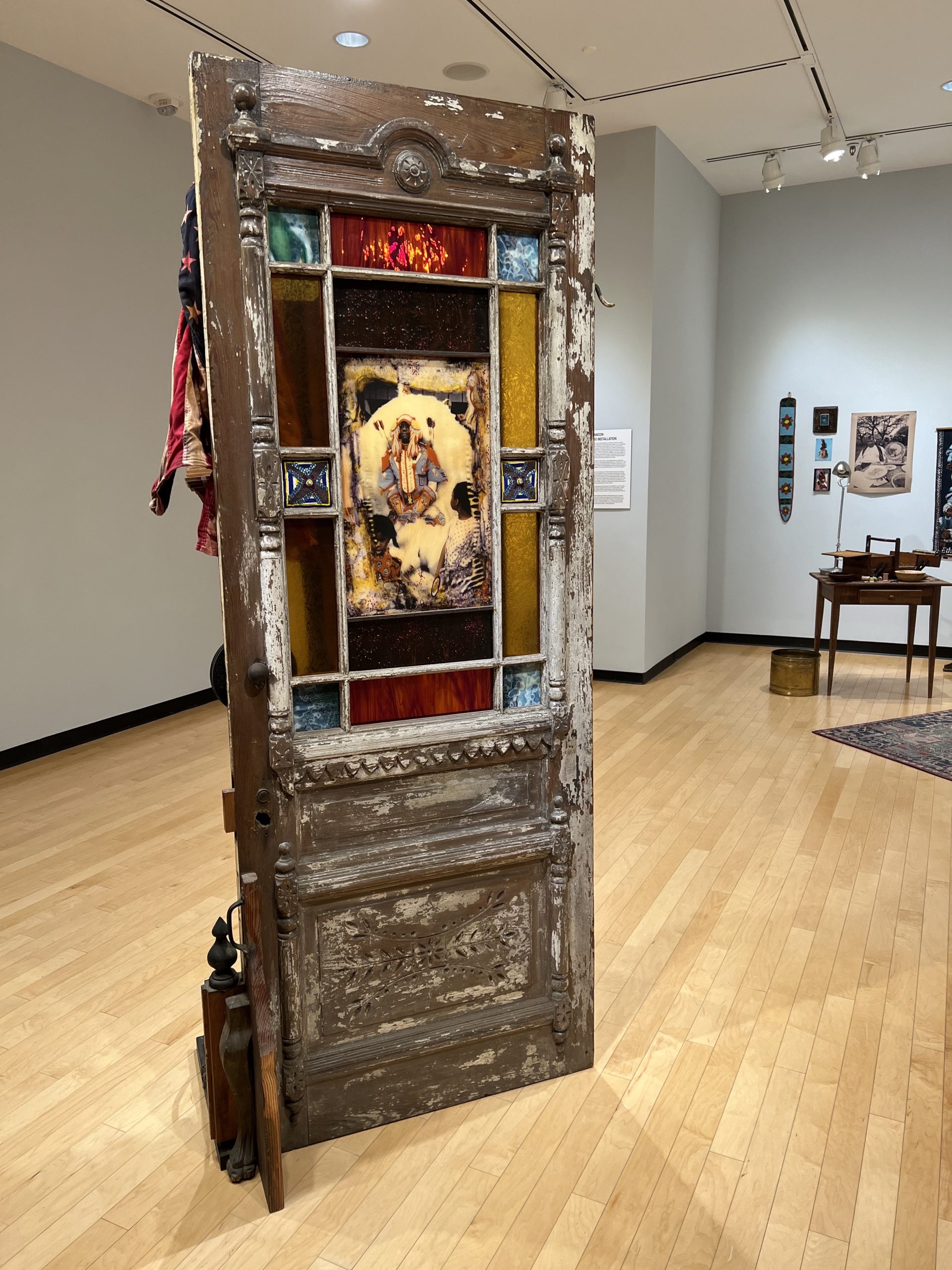


Our fall intern Grace Luther notes the impact of Hurricane Katrina on Demond Melancon’s exhibition As Any Means Are Necessary.
Hurricane Katrina was undoubtedly one of the worst weather disasters in modern United States history. The height of its devastation profoundly affected those living in low-income, urban areas of southern cities, particularly Demond Melancon’s hometown of New Orleans. Most who were displaced, lost their homes, or were otherwise negatively affected were African Americans. Nearly 100,000 Black residents and other people of color did not return to New Orleans after the storm. The lack of resources made them entirely unprepared for the storm, and as a result, generations of culture, heritage, and traditions were washed away.
Demond Melancon has spoken about how the lack of response to this crisis for the Black community of New Orleans has greatly influenced and motivated his work. He talks about how his daily fight against injustice happens one bead at a time. “We are still going through a lot of injustices,” Melancon said, “We have gentrification and not many resources, which makes it hard to sustain the culture.” Melancon’s door sculpture, made out of remnants of cultural objects and home items from the many Black residences wrecked by the hurricane, vividly shows the destruction of culture and continued ignorance of that destruction as a result of systemic oppression faced by Black Americans in the South following Katrina.

This sculpture, created by Demond Melancon with fellow artist and friend Christopher Porche West, is made entirely from home objects lost in the havoc wreaked on hundreds of homes in the aftermath of Katrina. The centerpiece features an estranged door, with dozens of added items and trinkets, each full of cultural significance to the inhabitants whose homes were destroyed in the storm. The artistic richness and complexity of this piece speak to the number of lives that were affected by the hurricane and the culture that was quite literally uprooted and displaced from New Orleans or destroyed in the process. All of the components, each with their own beauty, come together to form a complex amalgamation of treasure that has been ripped from its previous home, much like Black Americans after the turmoil of Katrina. Each part of this door, while gorgeous at face value, successfully conveys that they shouldn’t be where they are at the present moment but instead upholding heritage and traditions at their original home.

I honestly believe that this could potentially be the most overlooked part of Melancon’s exhibition at the Halsey, as many viewers and admirers of his craft largely focus on his impressive beadwork (and rightly so). That being said, I can’t help remarking on the wealth of meaning and, quite frankly, artistic genius present in this seemingly humble door sculpture. This door is another venue of expression by which Melancon loudly conveys the sheer magnitude of injustices faced by Black Americans, and not only in the South, but everywhere throughout the course of time. With its terrific height and size, it almost forces you to confront the ruin and continued ignorance of that ruin in the American South. With this piece, Melancon tells a story that most people have not heard.
Sources:
Fussell E, Sastry N, Vanlandingham M. Race, “Socioeconomic Status, and Return Migration to New Orleans After Hurricane Katrina.” Popul Environ, Jan 2010, https://pmc.ncbi.nlm.nih.gov/articles/PMC2862006/.
Hogan, Chloe. “Black Masking and beadwork on display at the Halsey.” Charleston City Paper, 6 Sept. 2024, https://charlestoncitypaper.com/2024/09/06/black-masking-and-beadwork-on-display-at-the-halsey/.
LSU Libraries, “Hurricane Katrina Impact on Communities,” https://guides.lib.lsu.edu/Hurricanes/KatrinaCommunities#:~:text=The%20majority%20of%20those%20who,PTSD%2C%20depression%2C%20and%20anxiety.
Rivlin, Gary. “White New Orleans Has Recovered from Hurricane Katrina. Black New Orleans Has Not.” Talk Poverty, 29 Aug. 2016, https://talkpoverty.org/2016/08/29/white-new-orleans-recovered-hurricane-katrina-black-new-orleans-not/index.html.